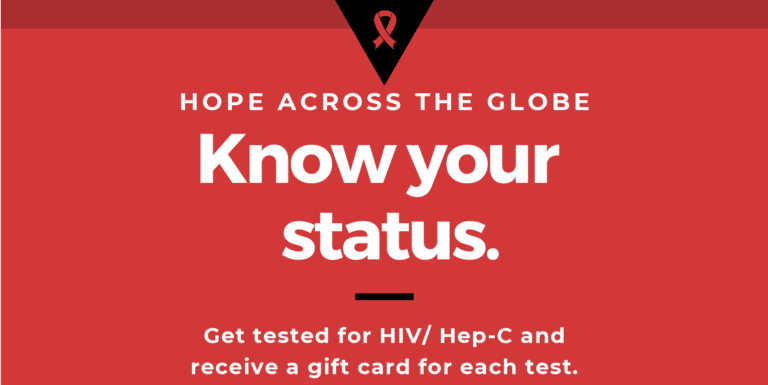Technological Advances and STD Prevention: Shaping the Future of Sexual Health
Sexually transmitted diseases (STDs) continue to be a global health concern, affecting millions of people worldwide. However, advancements in technology have opened up new possibilities for STD prevention, testing, and treatment. In this blog post, brought to you by Hope Across The Globe, a leading advocate for sexual health, we will explore the intersection of technology and STD prevention, highlighting the innovative approaches that are shaping the future of sexual health. From advanced testing methods to digital solutions, let’s delve into the exciting developments that are revolutionizing STD prevention.
Rapid and Accurate STD Testing
STD testing is a crucial component of prevention and early detection. Traditional testing methods often require individuals to visit a healthcare provider’s office and wait for days or even weeks for results. However, recent technological advancements have transformed the landscape of STD testing, making it faster and more accessible.
Point-of-Care Testing: Point-of-care testing devices allow for rapid on-site testing, providing results within minutes. These devices can detect a range of STDs, including HIV, syphilis, gonorrhea, and chlamydia. Point-of-care testing is especially valuable in resource-limited settings, where immediate diagnosis and treatment can significantly impact disease transmission.
Home Testing Kits: Technological innovations have also led to the development of home testing kits for various STDs. These kits typically involve collecting a sample at home, which is then sent to a laboratory for analysis. Results are typically delivered via secure online platforms or through confidential phone consultations. Home STD testing kits offer convenience, privacy, and easy access to testing, especially for those who may be hesitant to visit a clinic.
Telemedicine and Digital Solutions
Telemedicine and digital solutions have transformed healthcare delivery, including the field of sexual health. These technologies provide new avenues for individuals to seek medical advice, access information, and receive counseling or treatment for STDs.
Telemedicine Consultations: Telemedicine allows individuals to consult healthcare providers remotely, eliminating the need for in-person visits. Telemedicine consultations enable discussions about symptoms, risk factors, and appropriate testing or treatment options. This approach not only reduces barriers to access but also ensures privacy and convenience for patients.
Mobile Apps and Online Resources: Mobile applications and online platforms have emerged as valuable resources for sexual health education, risk assessment, and prevention. These platforms provide accurate information, anonymous support, and reminders for regular testing or medication adherence. Some apps even offer discreet partner notification services, encouraging responsible communication about potential exposure to STDs.
Pre-Exposure Prophylaxis (PrEP) and Post-Exposure Prophylaxis (PEP)
Technological advancements have also played a significant role in expanding access to pre-exposure prophylaxis (PrEP) and post-exposure prophylaxis (PEP) – two powerful tools in HIV prevention.
PrEP: PrEP involves taking antiretroviral medications daily to prevent HIV infection in individuals who are at high risk. Technological advancements have contributed to the development of mobile apps that offer PrEP support, including medication reminders, refill notifications, and access to educational resources. These apps help individuals stay adherent to their PrEP regimen and maintain optimal protection against HIV.
PEP: Post-exposure prophylaxis (PEP) involves taking antiretroviral medications within a specific time frame after potential exposure to HIV. Technological advancements have made it easier for individuals to access information about PEP, locate nearby healthcare providers who offer PEP services, and understand the necessary steps to take in case of potential exposure.
Data Analytics and Public Health Interventions
Data analytics and digital surveillance play a crucial role in shaping public health interventions and STD prevention strategies. By leveraging data from various sources, including healthcare records, online platforms, and social media, public health agencies can identify trends, target high-risk populations, and develop tailored interventions.
Digital Contact Tracing: Digital contact tracing apps have gained prominence during the COVID-19 pandemic. Similar technologies can be adapted for STD contact tracing, enabling individuals to anonymously notify their recent sexual partners about potential exposure. These apps offer a convenient and discreet way to inform partners, promote testing, and prevent further transmission.
Social Media and Online Interventions: Social media platforms and online interventions provide unique opportunities for sexual health promotion. Public health campaigns can leverage social media to disseminate accurate information, raise awareness about STD prevention, and encourage individuals to seek testing and treatment. Online interventions, such as virtual counseling or support groups, offer accessible resources for those seeking advice or emotional support.
Conclusion
Technological advances have transformed the landscape of STD prevention, testing, and treatment. From rapid and accurate testing methods to telemedicine consultations and digital solutions, technology has opened up new avenues for individuals to take control of their sexual health. Additionally, data analytics and digital surveillance play a critical role in shaping public health interventions and targeted strategies. Hope Across The Globe remains committed to promoting the adoption of these technological advancements and empowering individuals to make informed decisions about their sexual health.
Remember, regular STD testing, safe sexual practices, and open conversations about sexual health are crucial steps toward preventing and reducing the spread of STDs. By embracing the opportunities offered by technology and combining them with comprehensive prevention efforts, we can work towards a future where sexual health is prioritized, stigma is eliminated, and STDs are effectively controlled. Together, let’s embrace the advancements shaping the future of sexual health and create a world free from the burden of STDs.
Related Tag: STD Testing in Jacksonville






